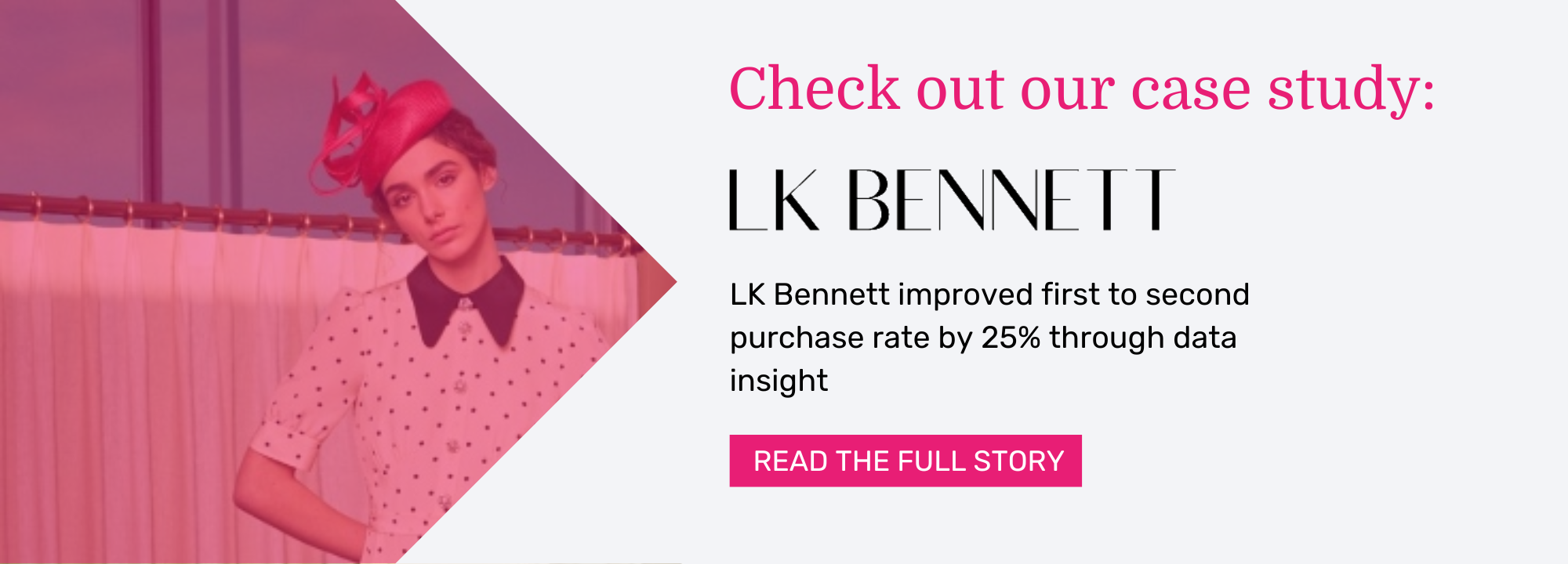Can’t shift those coats you bought? Sold out in sizes 4 and 14? A dress that customers keep returning?
Traditionally, buyers look at what sold in the previous year and replicate that number for the current year. This method has proved to be inefficient and the likely reason for the problems above - especially with the inconsistencies that external factors have on consumer shopping habits year on year.
Buyers only have around 48 hours to make a decision on how many of each size they are going to buy, on a per garment basis. This decision needs to be made for hundreds of garments so it’s no wonder it doesn’t always go to plan.
What Can You Do Instead?
Forecasting future demand is challenging no matter what industry you are in due to the many unknown factors. It’s especially challenging for fashion retailers due to continuously adding new products and the number of different sizes.
Demand forecasting done right means retailers meet customer demand for garments and minimize excess inventory. One interesting demand forecasting example is Zara. Sales and customer feedback data is sent back to Zara designers as soon as it’s received. This means style adjustments can be made quickly and in line with customer demand.
Artificial Intelligence and Machine Learning are able to take this thousands of steps further. They’re already beginning to make a huge impact on how to forecast demand.
The AI Demand Forecasting Method
Dressipi uses AI and analytics to predict size ratios for every product, based on demand and product features instead of last year’s data.
Through better quality product data and a better understanding of true customer propensities to buy (and keep) features at a size level, our size prediction models show the true demand at every size. This highlights what retailers should be purchasing on a per garment level.
- 1) Understand the true demand - includes missed opportunity
- 2) Understand the attributes of each garment and how they map to true demand
- 3) Predict for a set of attributes what the true demand will be
- 4) Attribute label the next buy at design and sketch
- 5) Use the predictions to forecast the buy so you can enjoy a 10% improvement in margin!
Attributes Are Key
No size prediction model in apparel can work without quality product data. This is because the shifts towards sizes are dependent on the features of the product. The features are what create accurate predictions and show what a retailer’s true demand will be.
It is not good enough to have just the seven basic attributes for these prediction models. By having consistent, detailed data on products, retailers can start to see significant performance benefits in this area.
For example, retailers typically only consider style and length when stocking inventory. A deeper analysis of data would reveal that neckline, embellishment, and even color also play a major role. This cream pair of leather trousers had 8% more sales in sizes 6 & 8 than the equivalent pair in black.
Product data also ensures no product is ever completely new. Even before the product launch, it has a set of product attributes that already has visit and sales propensities to learn from. This removes the guesswork of products with no past performance to base your size estimates on.
Download our guide on why quality and accurate garment data is the foundation for digital transformation:
APPAREL-SPECIFIC PRODUCT ATTRIBUTES GUIDE
Why is Demand Forecasting Important?
-
1) Improve Margin: Most of a retailer’s margin erosion is as a result of how they buy their products. Retailers can achieve up to 10% improvement in margin by simply altering the ratio of stock in each size. It really is the easiest way for retailers to generate profits and huge efficiencies.
-
2) Reduce Overstock & Discounting: The biggest impact from our demand predictions is redistributing the size of the buy so all sizes sell out at the same time. This allows retailers to sell more of each of those items at full price, significantly reducing fashion overstock and discounting. Around 25% of markdowns could be eliminated.
-
3) Improve Sustainability: Any net “overproduction” will be highlighted by this use of data-driven retailing models. This is when retailers are buying markdowns or worse, landfill from the start. It can be easily eliminated so retailers can improve sustainability and reduce waste.
-
4) Cost Efficiencies & Time Savings: And finally, making data-informed decisions without needing to do any of the forecasting manually, leads to cost efficiencies and time savings. Demand forecasting software allows buyers time to focus on the things that they really can make a difference to. It empowers their teams to do better things with data and time.
Final Thoughts
Ultimately, AI demand forecasting reduces size fragmentation by equipping buyers and merchandisers with the sales velocity and optimal size ratios for every product at SKU level. This helps inform replenishment & future buying decisions.
There really is no excuse not to give this a go. Retailers are doing all this activity anyway but for less profit - it’s effectively money for free!
If you’d like to discuss how our attributes can significantly improve the demand size curve accuracy and increase your profit margin, please get in touch.
If you’re interested in how data can be used to deliver profit, we’ve got a case study for you. Follow the link below to read the full story:


